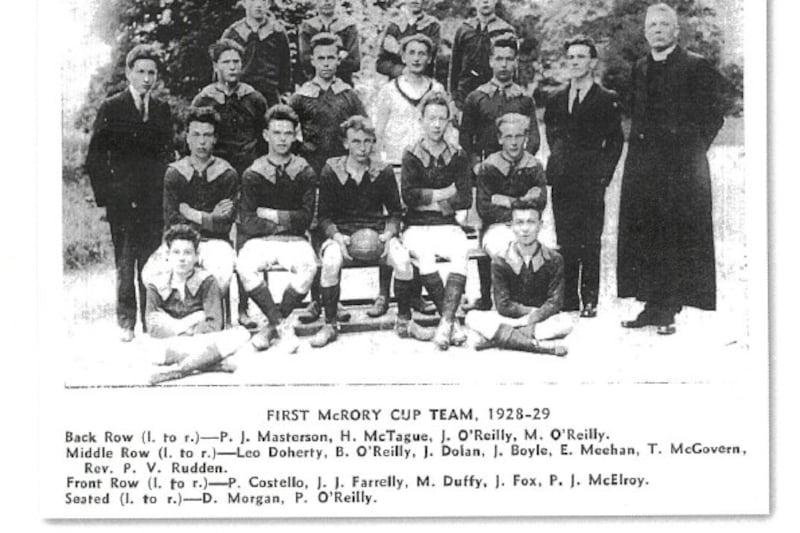St Colman’s was a seminary catering for students of the Diocese of Dromore and it would go on to become one of the great powerhouses of the MacRory and Hogan Cup competitions.
Not every college could boast of the fact that one of the founders of the GAA in 1884 had been a member of the teaching staff.
In 1871 Michael Cusack was appointed professor of English and Mathematics at the Violet Hill seat of learning.
On the staff for three years it proved to be a less than happy experience as he later acknowledged: “I was three years in the north and all the fun was knocked out of me!”
Colman’s had not participated in the inter-colleges’ ‘friendlies’ of the early decades of the 20th century.
In 1923 they were ready to make their footballing debut. It was a far from an inspiring experience. Facing St Patrick’s College, Armagh they were beaten by a “score which surpassed all records.”
Entering the MacRory Cup proper in the 1926-’27 season, they were away to Armagh and the home side totally dominated the exchanges The final score of 7-6 and 0-0 said it all.
A year or so later in the opening round of the 1927-’28 competition, Colman’s were much more competitive.
Described as shoot-out at the ‘ Frontier Town,’ the ‘Cardinal’s Own’ side, as St. Patricks were accustomed to calling themselves, came out on top.
The Newry side did manage a total of 2-2and among the scorers was a player named De Valera and another named McCartan, a surname which would later become synonymous with Down inter-county success.
Twenty years or more would elapse before Colman’s, under the captaincy of Martin Walsh, would be ready to contest their first MacRory Cup final.
St Michael’s, Enniskillen join the Macrory family
St Michael’s, Enniskillen in the 1920s was under the auspices of the Patrician Brothers and based at Belmore Street in the town (now the Clinton Centre).
The school flirted with the notion of joining the MacRory fold in 1927.
Four years later they made their debut in the competition against eventual winners, St. Macartan’s. Br Bede, a member of the Patrician Order of Brothers, was the inspiration behind the involvement of the Fermanagh School.
They had in their ranks some very talented footballers among whom was Derrylin-born Eamon McDonnell.
He played on two All-Ireland Colleges’ winning sides-1932 and as captain in 1933. By the end of the decade, the school was performing creditably in the newly-organised Rannafast Cup for junior sides. It was the late 1960s before it emerged as a significant force in MacRory Cup football.
With the division of the MacRory Cup competition into ‘A’ and ‘B’ sections, St. Michael’s played in the ‘B’ section.
Edited by J.A. Walshe







